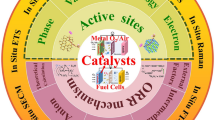Abstract
A system made of an atmosphere, a liquid metal and an oxide phase at a given temperature and total pressure is zero-variant and allows only a particular set of partial pressures, compatible with thermodynamic equilibrium. For any different gas composition the system will show a tendency to evolution.
Therefore, classical thermodynamics cannot give the answers to a number of problems of major interest, such as those concerning the conditions for interface saturation and oxide formation. Strictly speaking these are kinetic problems, but they can still be treated as pseudo-thermodynamic questions. The key to the problem is in considering the characteristic times of evolution, which suggest stationary state approximation for the condensed phases. In many instances, the evaluation of gas-atmosphere mass exchanges under stationary conditions makes it possible to determine the effective oxygen pressure at which the oxidation of the metal becomes evident. Surface tension measurements allow this condition to be detected with a good accuracy. According to experimental evidence, the effective oxygen pressure can be many orders of magnitude greater than the equilibrium value. The problem needs different theoretical approaches according to the molecular mechanisms involved. Moreover, from the experimental point of view, there are particularly delicate questions regarding the accuracy and the significance of the oxygen control and measurement.
Similar content being viewed by others
References
P. COSTA, A. PASSERONE and E. RICCI, High Temp. High Press. 20 (1988) 59.
P. CASTELLO, E. RICCI, A. PASSERONE and P. COSTA, J. Mat. Sci. 29 (1994) 6104.
E. RICCI, A. PASSERONE, P. CASTELLO and P. COSTA, ibid. 29 (1994) 1833.
E. RICCI, L. NANNI, E. ARATO and P. COSTA, ibid. 33 (1998) 305.
M. RATTO, E. RICCI and E. ARATO, J. Cryst. Growth 217 (2000) 233.
E. RICCI, M. RATTO, E. ARATO, P. COSTA and A. PASSERONE, ISIJ International 40 (2000) 139.
M. RATTO, E. RICCI, E. ARATO and P. COSTA, Met. Trans. B 32B (2001) 903.
C. WAGNER, J. Appl. Phys. 29 1295 (1958).
V. LAURENT, D. CHATAIN, C. CHATILLON and N. EUSTATHOPOULOS, Acta Met. 36 (1988).
T. B. MASSALSKI, “Binary Alloy Phase Diagrams” (American Society for Metals, USA).
K. NOGI, K. OGINO, A. MCLEAN and W. A. MILLER, Met. Trans. B 17 (1986) 163.
R. B. BIRD, W. E. STEWART, E. N. LIGHTFOOT, “Transport Phenomena” (J Wiley & Sons, New York, 1960).
O. HIRSCHFELDER, C. F. CURTISS and R. B. BIRD, “Molecular Theory of Gases and Liquids” (J. Wiley & Sons, New York, 1965).
C. H. P. LUPIS, “Chemical Thermodynamics of Material” (Elsevier, 1983) p. 188.
E. ARATO, E. RICCI, L. FIORI and P. COSTA, J. Mater. Sci. 40 (2005).
E. RICCI, R. NOVAKOVIC, M. RATTO and E. ARATO, Trans. JWRI 30 (2001) 179.
M. RATTO, L. FIORI, E. RICCI and E. ARATO, J. Cryst. Growth 249 (2003) 445.$
T. AZAMI and T. HIBIYA, ibid. 233 (2001) 417.
T. HIBIYA, “Abstract of High Temperature Capillarity HTC 2004” (March 2004, Sanremo, Italy, 2004) p. 45.
L. FIORI, E. RICCI and E. ARATO, Acta Mater. 51 (2003) 2873.
E. RICCI, D. GIURANNO and E. ARATO, “ Abstract of High Temperature Capillarity HTC 2004” (March 2004 Sanremo, Italy, 2004) p. 61.
Author information
Authors and Affiliations
Rights and permissions
About this article
Cite this article
Arato, E., Ricci, E. & Costa, P. Oxygen transport phenomena at the liquid metal-vapour interface. J Mater Sci 40, 2133–2140 (2005). https://doi.org/10.1007/s10853-005-1904-0
Received:
Accepted:
Issue Date:
DOI: https://doi.org/10.1007/s10853-005-1904-0




